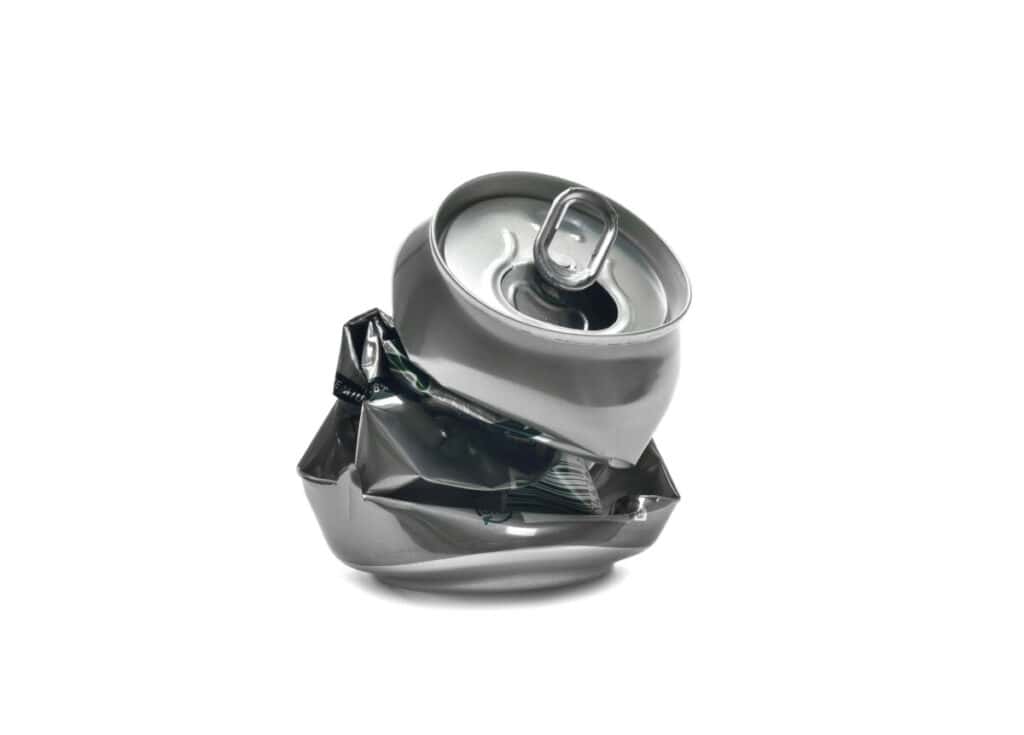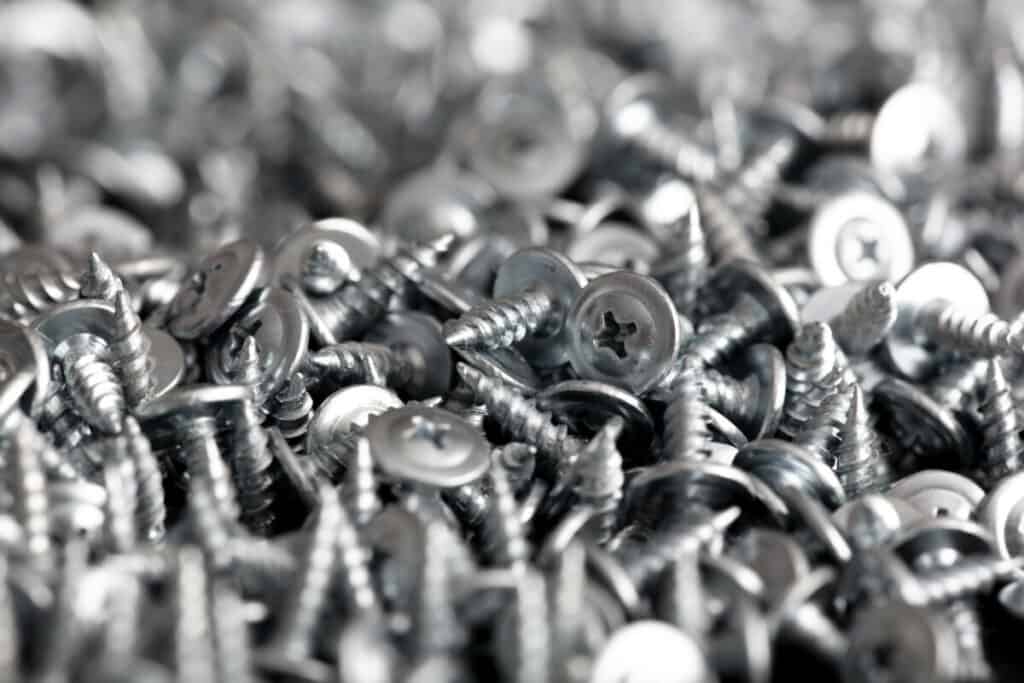
Being more eco-friendly and keeping metal out of landfills may be a challenge, but with the right inspiration, it can be a lot of fun! There are a lot of options for leftover screws and bolts that keep them out of the landfill.
Metal can be welded, melted, and broken down to be reused around the house. Hot or broken metal can be very dangerous, so safety and a proper tool set are always a must when working with metal. If reusing metal at home is too difficult, recycling plants and scrap yards are always an option.
Metal can be a pain to throw out, especially when it’s so malleable and perfect for reuse. Nobody wants to keep a pile of rusting metal sitting around while waiting for a stroke of brilliance, however. Here are a few ideas for taking care of any scrap and recyclable metals around your home.
Ideas for reusing metal at home
Metal is one of the best materials to recycle, and it’s something you probably have lying around your house. You can recycle more household metals than you might think. We may not all keep loose sheet metal in the storage closet, but everybody has some screws and bolts that have served their point. Soda cans are a great source of aluminum, and broken jewelry can provide a range of recyclable metals.
When recycling metal, melting it down to reuse will probably be one of the first things to pop into your head. With the proper tools and lots of safety precautions, you can melt and weld metal at home, but it doesn’t have to be that complicated.
There are small metal projects you can do at home using spare cans and other pieces of metal. If you do want to go the extra mile, make sure you have the correct equipment to start! Be sure to sort out your metals based on what you’re trying to melt, and enjoy your custom-made metal piece!
If becoming a part-time welder isn’t your cup of tea, metals can always be brought to recycling plants and scrap yards in your area to be recycled. Depending on the type and amount of metal, you may be able to make a little extra change off of your old trash!
Easy crafts and projects

Not all metal work requires complicated smelting and welding. For simpler projects, you may just need to drill some holes and bend some joints.
When doing simpler projects, don’t skimp on your safety! Sharp metal edges are still dangerous, and if there’s a lot of friction involved, that can make the metal heat up to possibly unsafe levels. Wear welding gloves, goggles, and or other protection against the metal.
You’re going to need to make sure you’re using the right tools, both for safety and to make sure you get the results you want! Depending on what project you’ve decided to tackle, you will probably need a band-saw or other metal saw, wire cutters, and a metal drill.
You can glue metal together instead of using machinery, although keep in mind that it is less stable. Some small projects you can experiment with are cup holders, and metal etching.
For cup holders, you’ll want to start off with a tube of metal, to hold the pencils. If you happen to have scrap metal laying around, that’s great, aluminum cans are what really comes in clutch. They’re already the perfect size and shape for holding pencils, toothbrushes, paintbrushes, and more. All you need to do is add a little pizzazz.
Metal etching can be done at home using a corrosive acid that will leave your design in the metal of your choice. Strong acids are used in metal etching to eat away at carefully selected areas to leave behind a design of your choice. Just make sure to use gloves, acids will also eat away at your hands if you give them the chance!
Smelting and welding
Didn’t realize you could be a stay-at-home blacksmith? It may take some practice, but smelting and welding can be done at home.
The right tools are a huge part of it. You’ll need to get your own smelting furnace, as well as sturdy welding gloves, a water bucket for dousing, and a mold. You don’t want to melt your mold, so make sure it’s made of steel or another material that melts at a higher temperature than what you’re melting. Melt your scrap according to the instructions of the smelting furnace, and mold your piece.
Be careful about mixing metal types, because you don’t always know what the alloy will be. Welding is different than smelting, although it does involve metal and high temperatures.
To weld, or melt a seam between two pieces of metal, you’ll need a welding gun, proper safety equipment like gloves and an apron, and a welding helmet. Welding helmets go over your eyes and actually block out light since welding produces a bright light that can blind you if you aren’t careful.
You weld metal by placing two pieces of metal together, and gently running the welding gun along a seam where you want them to be connected. There are actually different kinds of welding guns, which produce different seams and are specific to different kinds of welding, so make sure you use the right gun.
Safety concerns around metal

The biggest concern with recycling metal is that it’s more dangerous than just recycling old newspapers. Metal can be heavy, sharp, rusted, and heating it brings the risk of burns. When moving, using, and recycling metal, always be safe!
If you’re recycling for an at-home project, keep an eye out for sharp corners. If metal is sharp enough, it can cut you without you even realizing it. Avoid cuts by filing down sharp corners, and wearing thick protective gear. If you have cut yourself, be aware that unclean metal can be toxic when exposed to the bloodstream.
Tetanus is a fairly well-known risk, but dirty and rusted metal can also cause gangrene and other blood diseases. Even if you’re up to date on your shots, go to a doctor and don’t just try to clean out the wound at home. If the cut is deep enough, you may even need stitches.
Hot metal can be pretty scary too! Protective gear like welding gloves and metal aprons may feel hot at first, but they can protect you from some very serious burns. If you have burned yourself, be careful about what touches the burn! Burned skin is very sensitive.
The ideal thing for a burn is cold, running water. This will alleviate the pain, and remove some of the heat that may still be damaging your cells. Don’t place any dry cloth over the wound, as it may stick to the soft skin, which can be painful to remove. Ice may seem like the best thing, and while cooling the burn down is great, don’t apply ice directly to it. The temperature shock can make the burn worse.
To sum up, don’t put anything on a burn besides cool water until you can see a doctor! If it is a minor burn, or if it is starting to heal, a little bit of aloe vera on the wound can draw out the heat and help your skin heal, but the best way to treat a burn is to avoid getting one in the first place, so always be careful!
Related Topics:
If you like the article above, here are some other similar articles you should check out!
Options for Recycling Nail Polish
